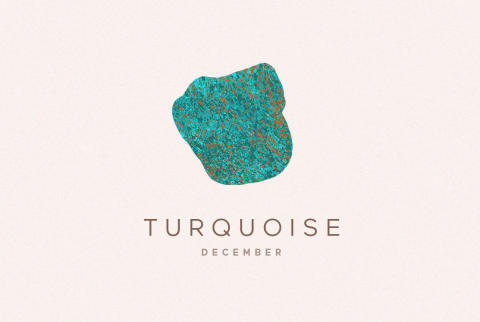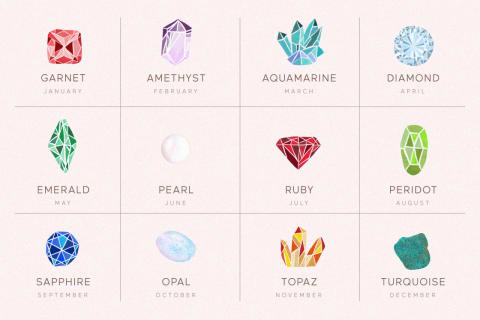As founder and educational director of the Love and Light School of Crystal Therapy Ashley Leavy previously explained to mbg, birthstones have roots in both Western astrology and Ayurveda, and the National Association of Jewelers standardized the official birthstones in 1912—because there were so many birthstone options across various traditions. Birthstones even appear in the book of Exodus (28:17-20), where it’s written that 12 gemstones were fixed on the prophet Aaron’s breastplate. “There were 12 stones, one for each of the names of the sons of Israel, each engraved like a seal with the name of one of the 12 tribes,” the Bible reads. Nowadays, birthstones are a popular gift for everything from birthdays to holidays to anniversaries and more. The stone has a vast range of colors and patterns, according to Leavy, who tells mbg it’s often sold in a stabilized form (meaning it’s crushed up and mixed with resins and binders to strengthen it) or with a stabilizing coating. That’s because turquoise is quite a soft, porous stone. As such, completely natural turquoise is hard to come by, and you’d want to look for “old stock” turquoise (aka mined a long time ago), though it is pretty rare, Leavy says. And it’s also not uncommon to find turquoise fakes on the market, so you’ll want a discerning eye to that end, too. Turquoise is commonly found in Arizona, as well as areas in Nepal and Tibet, Leavy says, adding that it has a rich symbolic history all around the world. Namely, she notes, a turquoise bracelet found on the mummy of the Egyptian Queen Zer is one of the oldest known pieces of jewelry, where ancient Egyptians believed it to be a stone of good luck. And First Nations tribes in the Southwest, such as the Diné, she adds, regarded turquoise as a sacred stone. And according to Leavy, turquoise is associated with the elements of air and water, as well as the signs of Sagittarius, and less slightly, Capricorn. “It really is a great stone for communication, intuition, emotional healing, and emotional balance,” Leavy tells mbg, adding, “It’s also good for present moment awareness and mindfulness and self-expression—especially if you have a difficult time communicating your needs or talking about your feelings or emotions.” It’s also good for self-confidence and promoting relaxation, any type of spiritual work, and even enhancing meditation. Long story short—this is a versatile stone in its application! So to work with it, Leavy recommends carrying it in your pocket, particularly if you wanted to work on self-expression and self-competence. “Incorporating this crystal into your altar or sacred space, because of its connection with the water elements and with intuition, could be beneficial as well,” she adds. And good news if you’re planning on gifting turquoise to a December baby in your life: Crystal expert Heather Askinosie previously wrote for mbg that when turquoise is given as a gift, its healing properties are thought to be magnified. If you have a completely natural piece of turquoise, you’ll want to be extra careful to keep it safe and clean, and keep it away from water or dirt. And so you don’t lose any of this stone’s beautiful blue hue, try to keep it out of direct sunlight when possible. In terms of energetically cleansing your turquoise, any of your preferred cleansing or charging techniques would be good, such as leaving it overnight in the light of the full moon, using smoke or sound, or even your own breath. (Check out our guide to cleansing and charging crystals for more inspo.)







